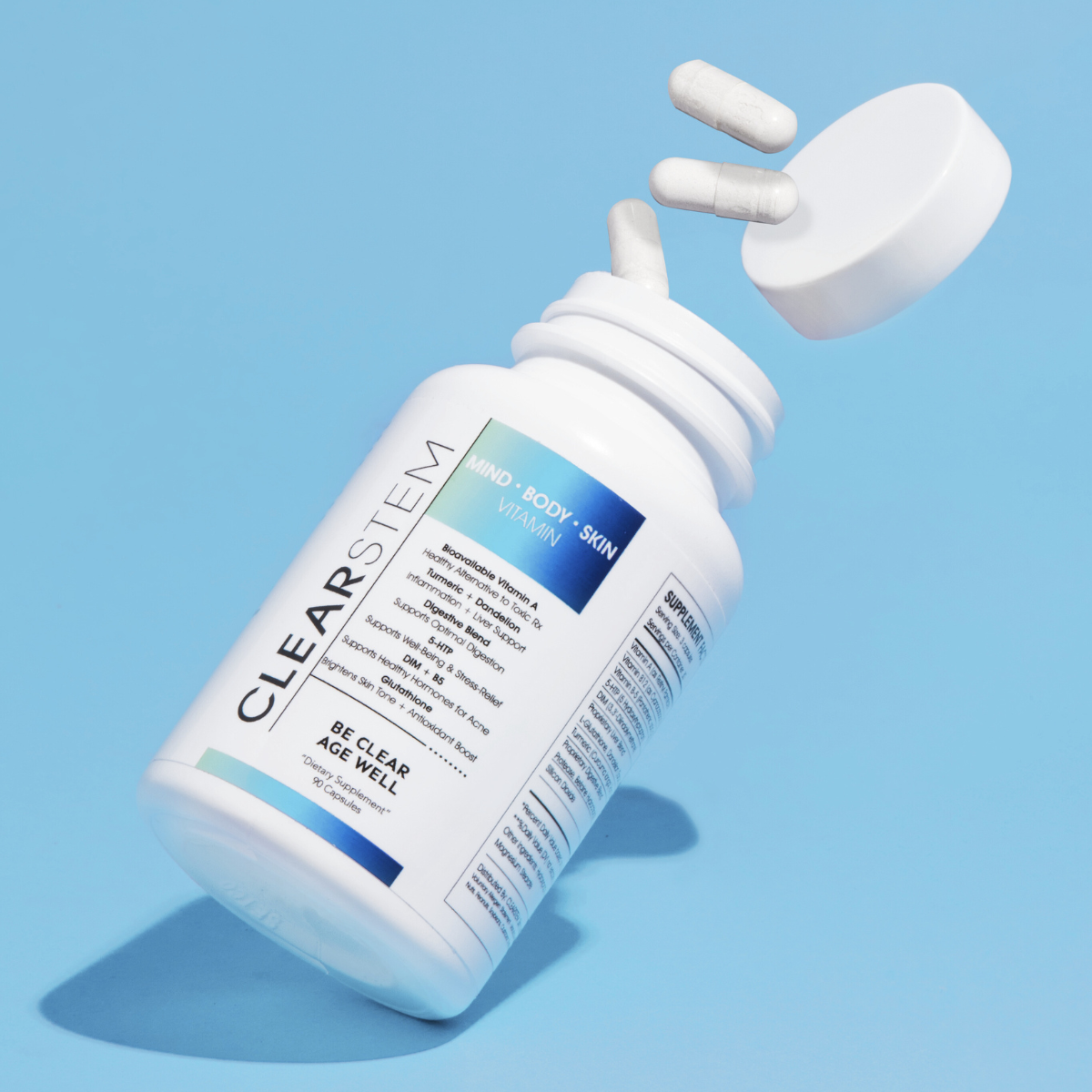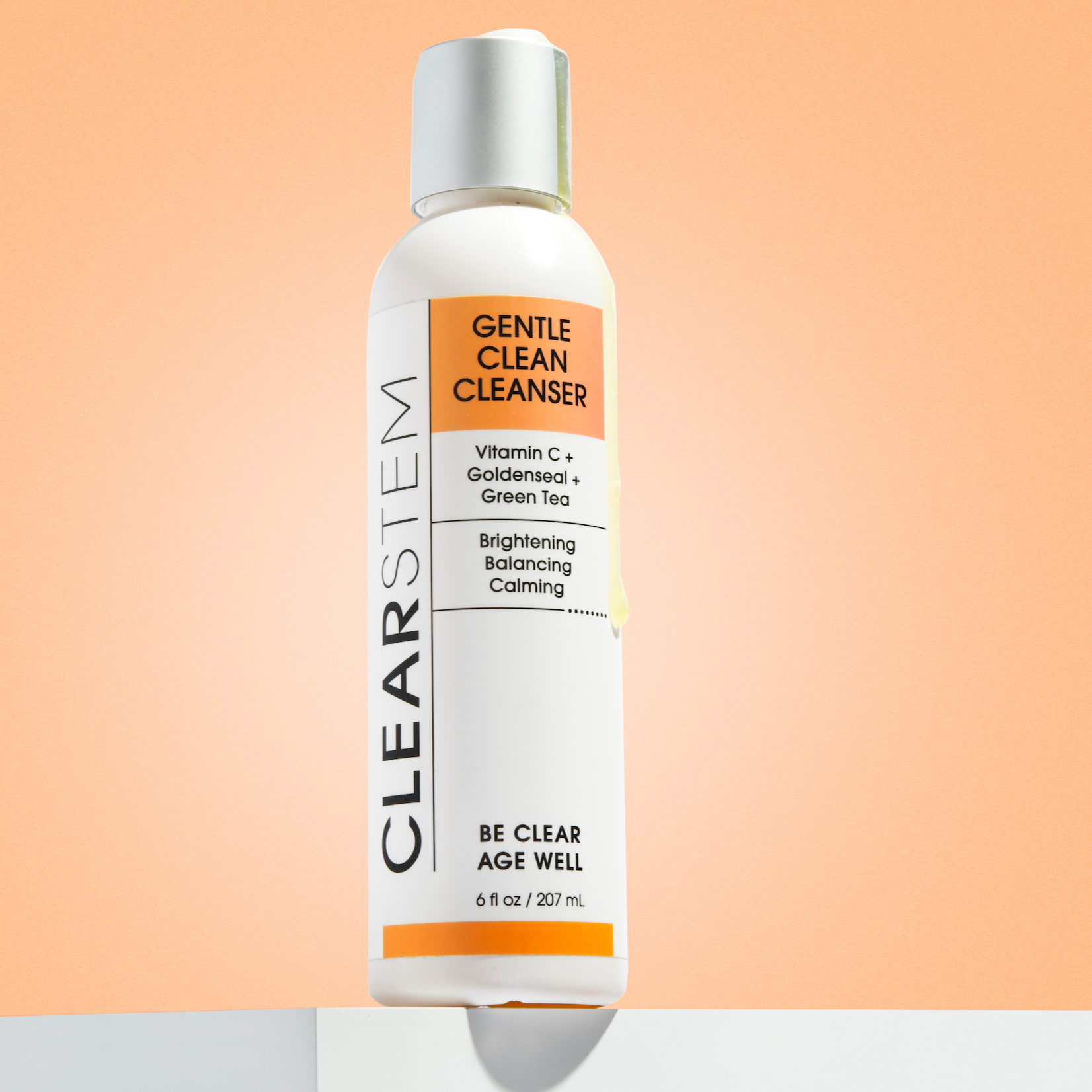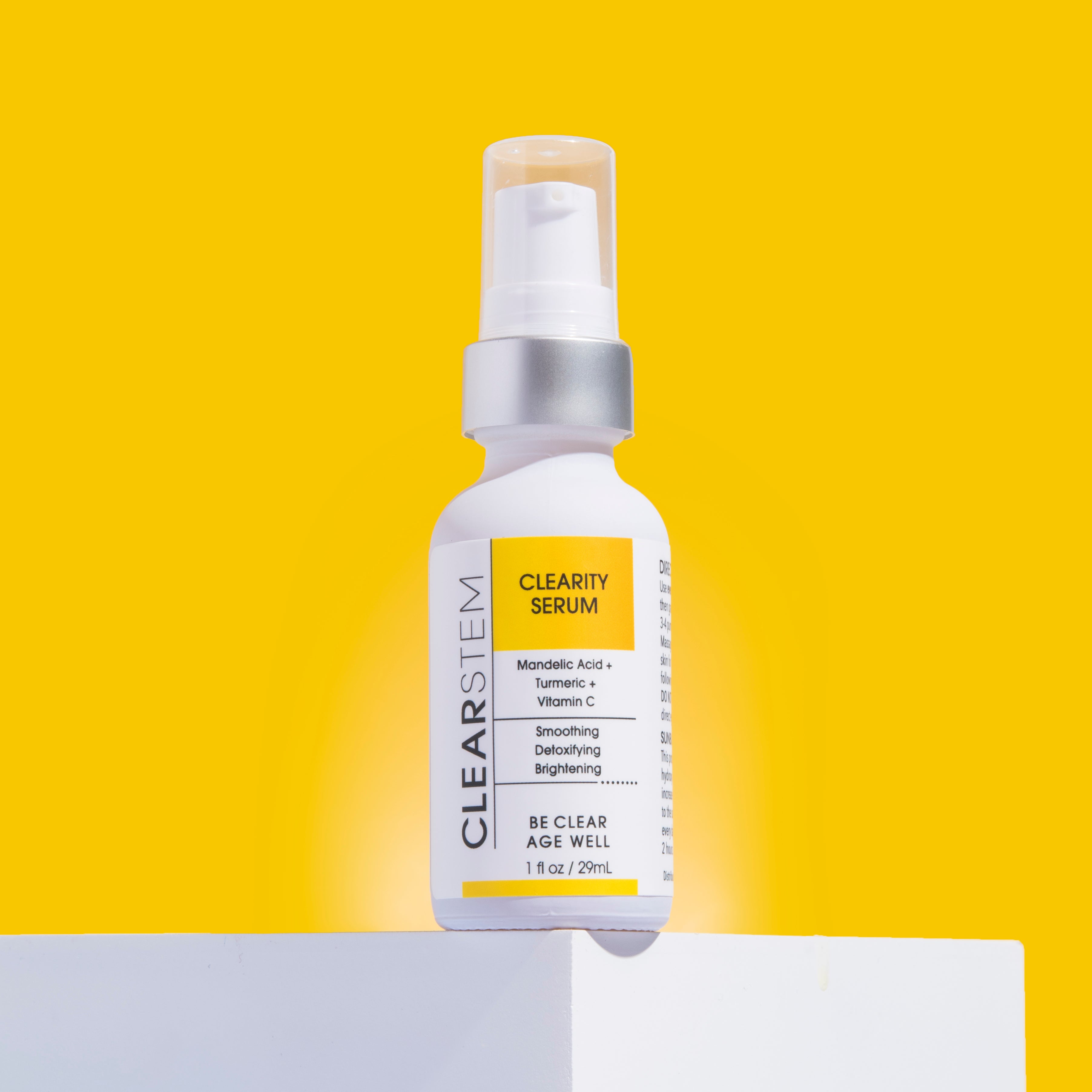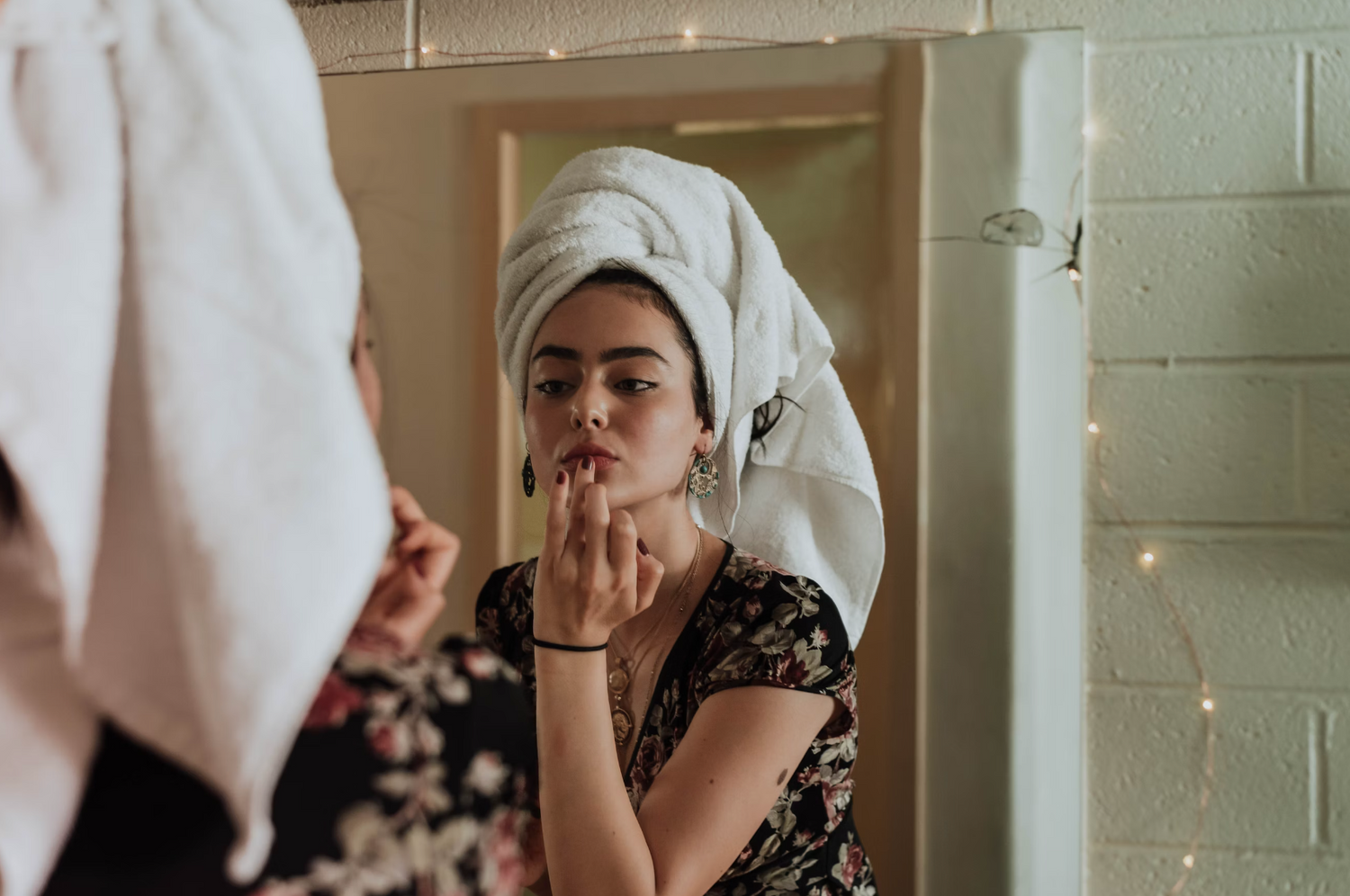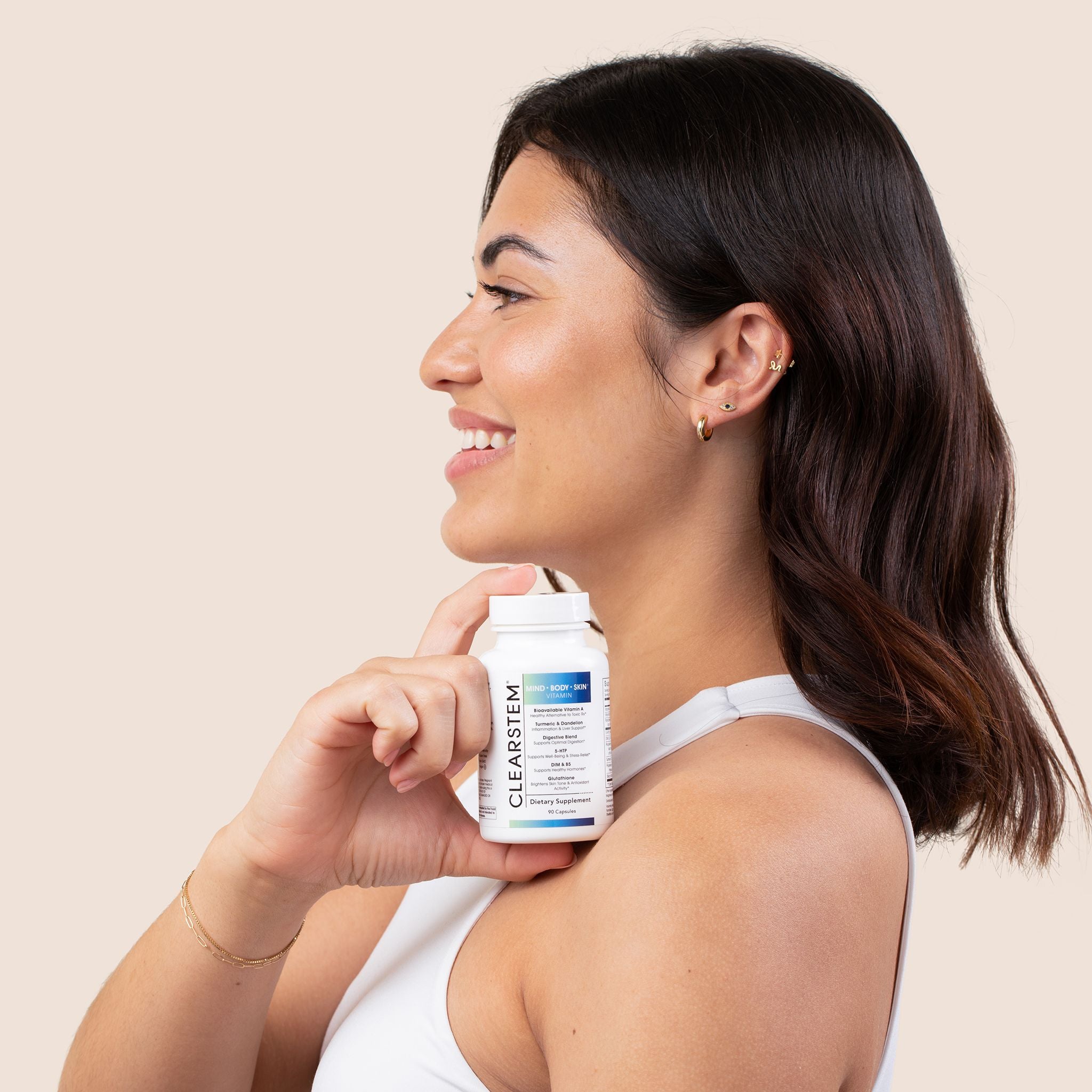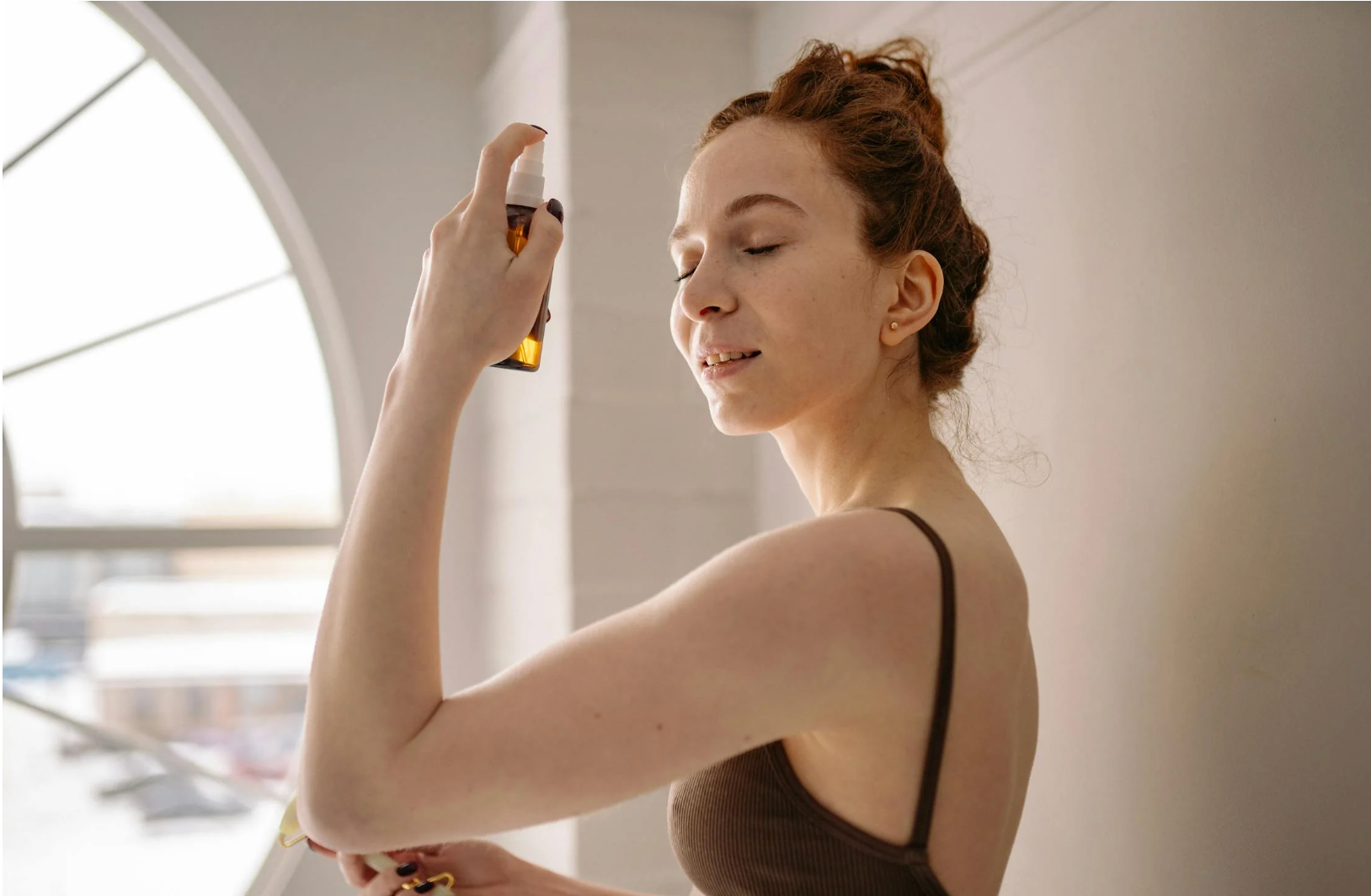Let’s face it: Acne can be aggravating no matter if it appears on your chin, cheeks, or forehead, but it often prompts next-level exasperation when it crops up on your jawline.
Why? Because unlike discrete, individual spots that may appear elsewhere on your face, jawline acne tends to emerge in clusters that are not only difficult to conceal but also occasionally painful. It’s also important to note that this type of acne can occur on one side of the face or in different areas of the jawline.
Your first step toward eliminating pimples on the jawline is understanding their root cause before adopting—or refining—a skincare routine specifically designed to send them packing. Let’s dive in.
3 Causes of Jawline Acne
Whether stubborn acne manifests as blackheads or whiteheads, cysts or zits, they’re unified by how they erupt: Clogged pores. No matter if your pores are blocked by dirt, oil, makeup, or dead skin cells, your body perceives the obstruction as an attack and fires off an inflammatory response that results in an acne breakout.
But if maintaining a clean, fresh face was all we had to do to preserve a clear complexion, acne wouldn’t be the most prevalent skin condition in the US—one that affects approximately 50 million Americans. Rather, persistent acne may be an indication that something is amiss internally or externally.
Three of the most common causes of acne on jawline include:
Hormonal Factors
Hormonal imbalances of any kind can wreak havoc on your complexion—a fact that anyone who survived the trials of adolescence can attest to. During this time, the rapidly vacillating hormones coursing through our bodies trigger excessive sebum production, which can plug pores and result in pimples.
Adult acne may not be as ubiquitous, but it can have just as severe of an impact on our moods and complexions—and, just like in our teens, changes in hormone levels may be responsible for it. These typically come down to the hormonal shifts that accompany:
- Menstruation
- Pregnancy
- Perimenopause
- Menopause
Specifically, these circumstances and milestones—as well as the use of progestin-only birth control and underlying medical conditions like polycystic ovarian syndrome (PCOS)—may throw off hormonal equilibrium. Meanwhile, the increased production of three key androgen hormones may stimulate sebum growth and oil production:
- Testosterone
- Dihydrotestosterone (DHT)
- Dehydroepiandrosterone sulfate (SDHEA)
In addition to the factors mentioned above, excess B12 vitamin can also play a role in hormonal imbalances that lead to jawline acne. While B12 is essential for various bodily functions, including nerve function and red blood cell production, excessive intake can disrupt hormonal balance. Specifically, excess B12 vitamin can lead to testosterone spikes, exacerbating sebum production and increasing the likelihood of acne, particularly along the jawline.
All of this underscores the need to commit to lifestyle habits, including the use of supplements that promote hormone balance naturally. It also emphasizes the importance of eschewing foods, cosmetics, products, and pore-clogging ingredients that act as endocrine disruptors—namely BPA, phytoestrogens, and phthalates.
Skincare and Hygiene
Skincare practices may be performed to stave off jawline breakouts (and acne, period), but some cleansing habits may work against your desired intent.
To that end:
- Petrochemicals, such as petroleum, paraffin wax, and benzene
- Alcohol denat., such as SD Alcohol 40, SD Alcohol 40B
- Talc
- Bismuth oxychloride
Together, these practices can be tough on your skin—and render you even more vulnerable to jawline and chin acne.
Diet and Lifestyle
Diet and lifestyle also play a pivotal role in persistent acne and its perpetuation. A few of the most vital to be aware of include:
- Egg Allergies: Egg allergies can trigger inflammatory responses in the body, potentially exacerbating acne symptoms, especially along the jawline. Individuals with egg allergies may experience increased inflammation, leading to clogged pores and the development of acne.
Here’s the good part: All of these lifestyle choices are in your hands—and reversible.
Identifying Jawline Acne Types
Pinpointing what type of acne is terrorizing your jawline is one of the keys to treating it appropriately.
Generally speaking, acne falls into one of the following categories:
Whiteheads and Blackheads
Whiteheads and blackheads rest under the umbrella of “non-inflammatory acne,” or what’s deemed a less acute presentation of acne.
Both whiteheads and blackheads can also precede what some of us find the most daunting: Acne lesions.
Papules and Pustules
Papules and pustules have a great deal in common but they, too, share important distinctions:,
Cysts and Nodules
Cysts and nodules are widely thought of as the more dramatic and worrisome forms of acne vulgaris:
Prevention and Skincare Tips
Acne on the jawline may be fiercer in appearance—particularly if it takes on a rash-like look—but preventing it is, really, no different than treating acne in general. This entails many of the tips outlined above. To recap:
- Ensure a clean face that’s free of debris by gently washing your face twice per day.
- Avoid lifestyle choices that may give rise to acne and instead choose practices that nourish your body’s biggest organ, such as following a healthy diet, getting ample hydration and exercise, adhering to smart stress-coping strategies, wearing SPF, quitting smoking (if it applies to you), and obtaining sufficient sleep.
- Dodge ingredients that may stimulate sebum production and/or inflammation.
All that said, given the unique location of jawline acne, men may want to avoid shaving the area with a dull razor blade, while everyone might benefit from loosening their chin straps after wearing a helmet—and washing your face after you’ve worn one.
Finally, be sure to moisturize even if it’s the last thing you believe your skin needs: Dull and dry skin can still be susceptible to acne and require extra TLC.
Treatment Options for Jawline Acne
As we mentioned, the type of acne treatment you employ depends on the form of acne you have:
- Vitamin C
- Bakuchiol
- Alpha-hydroxy acids (AHAs)
- Beta-hydroxy acids (BHAs)
Prevent Future Breakouts With CLEARSTEM
Jawline acne may top your list of skincare fears—and we hear you on that. Caused by a myriad of factors, including hormonal imbalances, underlying conditions, lifestyle choices, and improper skincare techniques and practices, it may strike you as unseemly (or propel you to hide out until it vanishes).
Fortunately, jawline breakouts are far from a life sentence—and CLEARSTEM can help you both prevent and treat it. Our hormonal acne supplement was designed to keep you and your skin balanced, calm, and clear, while our collection of skincare for acne-prone skin is crafted with science-based, nurturing ingredients. For an effective spot treatment or mask, try our Sulfur Spot&Mask treatment.
Enhance your skincare health with CLEARSTEM.
Sources:
VeryWell Health. What your pores say about your skin.
https://www.verywellhealth.com/what-are-pores-15488
American Academy of Dermatology. Skin conditions by the numbers.
https://www.aad.org/media/stats-numbers
Healthline. Hormonal acne: traditional treatments, natural remedies, and more.
https://www.healthline.com/health/beauty-skin-care/hormonal-acne
Anais Brasileiros De Dermatologica. Adult female acne: a guide to clinical practice.
https://www.ncbi.nlm.nih.gov/pmc/articles/PMC6360964/
National Institute of Environmental Health Sciences. Endocrine disruptors.
https://www.niehs.nih.gov/health/topics/agents/endocrine
American Academy of Dermatology. 10 skin care habits that can worsen acne.
https://www.aad.org/public/diseases/acne/skin-care/habits-stop
Byrdie. These makeup ingredients are causing your breakouts.
https://www.byrdie.com/why-am-i-breaking-out-makeup
Goop. What’s up with petroleum in beauty products?
Acne.org. Is mineral makeup good for acne?
https://www.acne.org/is-mineral-makeup-good-for-acne
Harvard Health. Does diet really matter when it comes to adult acne?
GoodRx Health. Health debunked: can the sun clear up acne?
https://www.goodrx.com/conditions/acne/does-sun-help-acne
VeryWell Health. Does smoking cigarettes cause acne?
https://www.verywellhealth.com/is-smoking-cigarettes-a-cause-of-acne-15687
Cleveland Clinic. Blackheads. https://my.clevelandclinic.org/health/diseases/22038-blackheads
Cleveland Clinic. Whiteheads. https://my.clevelandclinic.org/health/diseases/22039-whiteheads
StatPearls. Acne vulgaris. https://www.ncbi.nlm.nih.gov/books/NBK459173/
Drugwatch. Papules.
https://www.drugwatch.com/health/acne/papules/
Mount Sinai. Pustules.
https://www.mountsinai.org/health-library/symptoms/pustules
Cleveland Clinic. Inflammatory acne: symptoms, types, causes, treatment.
https://my.clevelandclinic.org/health/diseases/22765-inflammatory-acne
Healthline. Jawline acne: causes, treatment, and more.
https://www.healthline.com/health/jawline-acne#prevention
Healthline. Does Vitamin C treat acne?
https://www.healthline.com/nutrition/vitamin-c-for-acne
Journal of Cosmetology Dermatology. Applications of bakuchiol in dermatology: systematic review of the literature.
https://pubmed.ncbi.nlm.nih.gov/36176207/
Medical News Today. Understanding the difference between AHA and BHA for skin care.

